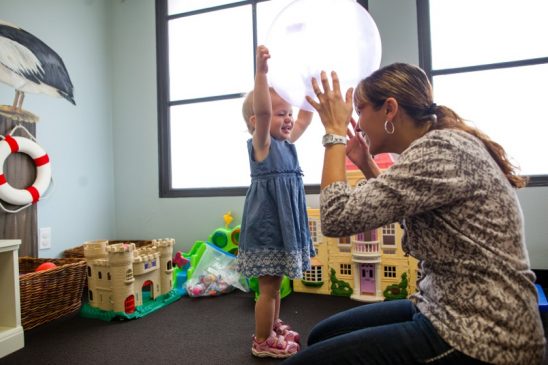
If you have a child with autism, you probably face many difficulties when you are seeking to make your child’s life as fulfilling as possible. You dream of spending time with your child in a fun, engaging, and creative way, while simultaneously trying to decrease unwanted behavior that is challenging.
According to the World Health Organization, one in 160 children is diagnosed with autism spectrum disorder (ASD). Studies over the past decade have indicated that the number of children diagnosed with ASD has been steadily increasing, which has led parents to seek out the best therapeutic approach. Research has shown that one of the most successful treatments is ABA therapy.
Applied Behavioral Analysis (ABA) is the most common treatment for people diagnosed with autism. How does it work? This treatment is carried out by therapists who carefully observe a child with autism, documenting his/her behaviors and conducting interviews with the parents, and others who have an important role in the child’s life. After collecting the information, an applied behavioral therapist eventually creates an ABA treatment plan. An ABA treatment plan refers to numerous interventions that are created to improve overall behaviors, teach new skills, and reduce behaviors that hamper effective participation in a traditional educational environment.
This type of therapy typically includes hours of one-on-one personalized therapy, designed to treat specific skill deficits such as classroom competence or speech problems. ABA therapy consists of breaking down skills into simple, achievable steps, so a child with autism can learn that skill in a form that is easier to understand and manage.

Parental involvement is crucial for ABA treatment success. Parents work alongside therapists and educators to outline any behaviors that their child should change and address skills that can be taught. Parents also have another important role when it comes to ABA treatment – after working with a therapist for a certain number of hours, that child continues working on skill-building and behavioral activities with his/her parent. To ensure that parents are given the tools needed to work with their child, ABA treatment incorporates learning sessions for the parents who are taught new skills that can be used at home. Since parents are asked to continue the work that is done by the therapist at home, it is essential that they have the right tools. This type of engagement between a parent and their child is valuable and builds an important connection that lasts.
ABA treatment is a source of hope that can better the lives of families facing ASD. In the world of autism, it is widely known that ABA treatment shows great and lasting results. A well-known study done by Ivar O. Lovaas in 1987, highlighted the outcomes from a number of families who had a child with autism and participated in an ABA therapy program. His study showed that 90% of those families saw a significant improvement in their child’s behavior after only a few years and sometimes a few months. This is consistent with the experience of many families participating in ABA therapy, who celebrate seeing their child mainstreamed into a traditional classroom setting.

This model is based on positive reinforcements, in order to encourage desired and appropriate behaviors and discourage inappropriate ones. Social skills are broken down into separate, learnable units. Hand-washing, for example, would be taught as a series of steps — turning on the faucet, using the soap, drying the hands — and mastered individually. Eventually, as an outcome of the training, the child with autism might progress from learning a simple task, like sitting quietly in a chair, to more difficult ones, like making eye contact and, ultimately, conversing in a free and intelligent way.
Raising a child with autism can be an incredible and challenging labor of love. Through Hidden Treasures’ caring application of ABA Therapy, we help families with autism “Discover the Treasure Within”. Learn more about Our Program and contact us TODAY!
